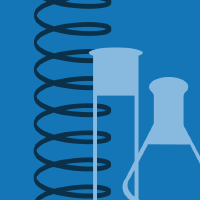Topic Editors


Application of Liquid Chromatography-Mass Spectrometry and Related Techniques
Topic Information
Dear Colleagues,
The MDPI open access journals Analytica, Foods, Molecules, Sensors and Separations are combining to produce a special topic edition on “Application of Liquid Chromatography-Mass Spectrometry and Related Techniques”. All forms of liquid chromatography will be covered, including simple-column LC, HPLC, IC, TLC, SEC, etc. Although the main emphasis will be on LC–MS, it will also encompass related flow-based separation methods such as field-flow fractionation, hydrodynamic chromatography, etc., and it should be made clear that all forms of MS are included, e.g., ICP–MS, MS–MS.
Dr. Chao Kang
Dr. Ronald Beckett
Topic Editors
Participating Journals
| Journal Name | Impact Factor | CiteScore | Launched Year | First Decision (median) | APC | |
|---|---|---|---|---|---|---|

Analytica
|
- | - | 2020 | 15.6 Days | CHF 1000 | Submit |

Foods
|
5.2 | 5.8 | 2012 | 13.1 Days | CHF 2900 | Submit |

Molecules
|
4.6 | 6.7 | 1996 | 14.6 Days | CHF 2700 | Submit |

Sensors
|
3.9 | 6.8 | 2001 | 17 Days | CHF 2600 | Submit |

Separations
|
2.6 | 2.5 | 2014 | 13.6 Days | CHF 2600 | Submit |

MDPI Topics is cooperating with Preprints.org and has built a direct connection between MDPI journals and Preprints.org. Authors are encouraged to enjoy the benefits by posting a preprint at Preprints.org prior to publication:
- Immediately share your ideas ahead of publication and establish your research priority;
- Protect your idea from being stolen with this time-stamped preprint article;
- Enhance the exposure and impact of your research;
- Receive feedback from your peers in advance;
- Have it indexed in Web of Science (Preprint Citation Index), Google Scholar, Crossref, SHARE, PrePubMed, Scilit and Europe PMC.

